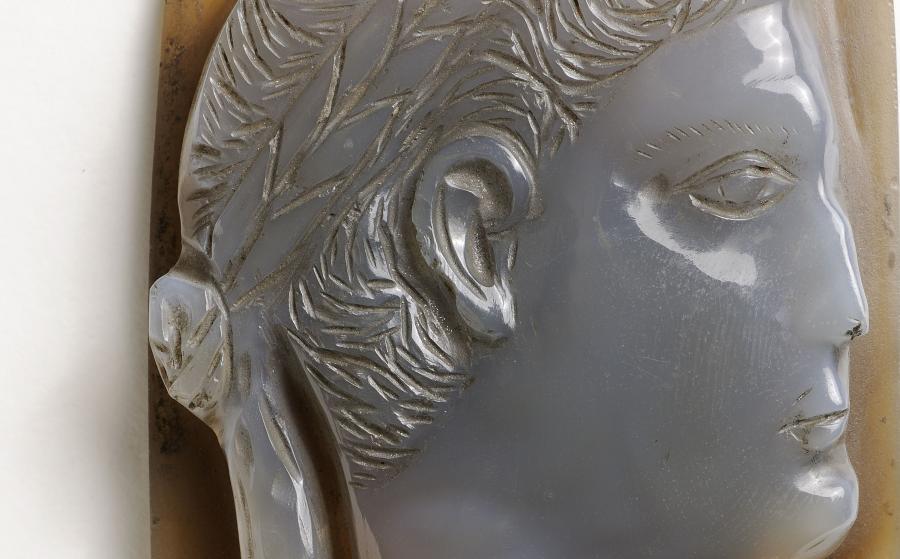Cameo, said to be of Constans
Information sur l’artiste
300

Camée, dit de Constant, IVe ou XIIIe siècle.
Image © Lyon MBA - Photo Alain Basset
This cameo, the largest example from the Late Roman Empire that we know of, is carved into two layers of sardonyx: the bust of a prince wearing a laurel wreath or an emperor in profile in a milky greyish-blue colour stands out on the brown background. It comes from the reliquary cross of the Saint-André-le-Bas church in Vienne, destroyed during the French Revolution.
The cross features two other gemstones. The first is a cameo in blood jasper that depicts saint Nicolas, part of the Artaud collection, then head of the museum under the First Empire, which is also held at Lyon Fine Arts Museum. The second, a "large round onyx shaped like a fallen leaf and as large as the palm of one’s hand" has yet to be identified. They were recognised from a sketch of the cross and its cameos made in the 17th century and held at the Bibliothèque nationale de France (French national library).
This cameo, which was long thought to be a portrait of Constans, the youngest son of Constantine, is now believed to be an Italian copy from the late Middle Ages.
Late Roman Empire (4th century) or late Middle-Ages (13th century)
Sardonyx
H. 9.6; W. 5.5; Max. E. 1.5 cm
Acquired in 1835
Inv. A 1563





